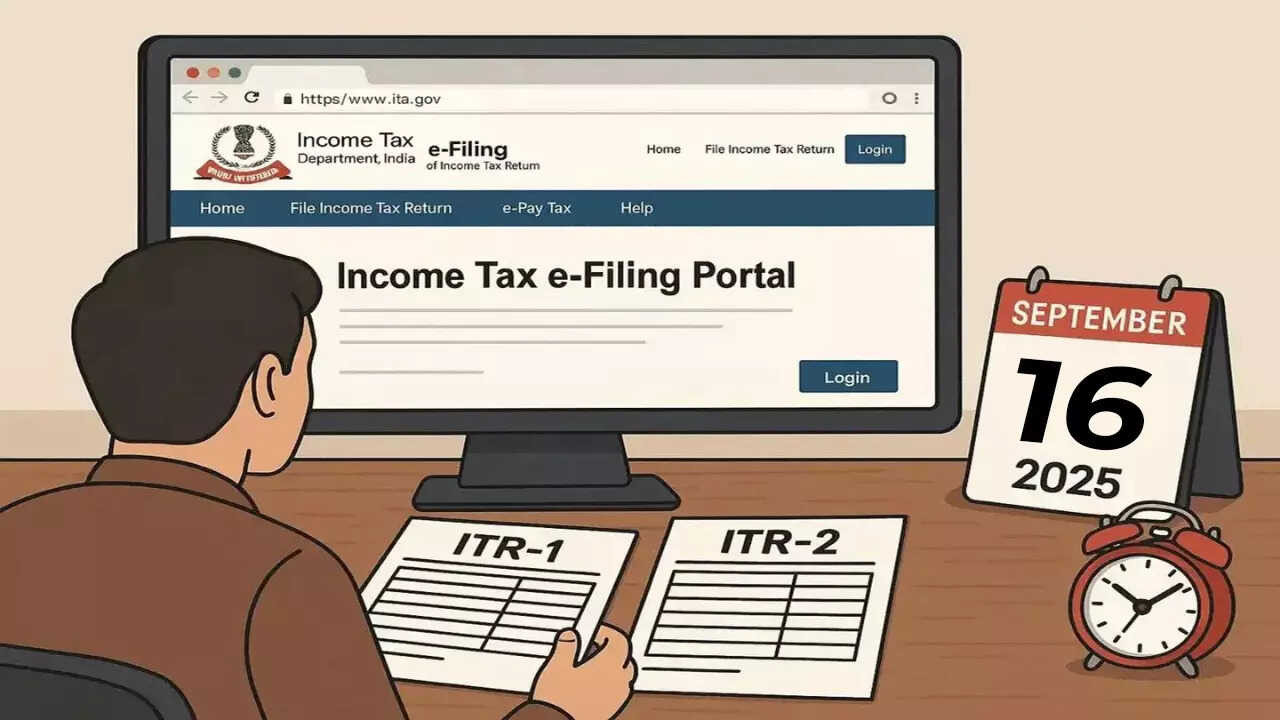ITR filing FY 2024-25: Taxpayers filing ITR-2 and ITR-3 face delays as the Income Tax Department hasn’t released the utilities due to extensive changes in the forms. These forms, applicable for individuals with complex financial profiles, require comprehensive technical modifications. Recognizing the time needed for system readiness, the CBDT has extended the ITR filing deadline to September 15, 2025.
Where Are My ITR-2 and ITR-3 Forms? A Delay Decoded
The tax season is upon us, and for many, that familiar dread of gathering documents and navigating the online portal has begun. While most Individual Tax Return (ITR) forms are readily accessible on the Income Tax Department’s e-filing website, a noticeable absence is causing some anxiety: where are ITR-2 and ITR-3? Let’s unpack the reasons behind this delay and what it means for you.
For salaried individuals with simple income structures, filing ITR-1 (also known as Sahaj) is typically straightforward. Similarly, those with income from business or profession who are opting for the presumptive taxation scheme under Section 44AD, 44ADA, or 44AE can usually file ITR-4 (Sugam) without much hassle. However, ITR-2 and ITR-3 cater to more complex financial scenarios, and it’s precisely this complexity that’s causing the holdup.
Why the Delay in Releasing ITR-2 and ITR-3?
Several factors contribute to the delayed availability of these forms. The Income Tax Department is continuously refining the e-filing process, often incorporating new features, clarifying existing rules, and enhancing security measures. This year is no different, and some significant upgrades are underway.
One of the key reasons for the delay is the ongoing integration of updated legal and regulatory requirements into the forms and the associated software. These changes can stem from amendments to the Income Tax Act, new notifications from the Central Board of Direct Taxes (CBDT), or even judicial pronouncements that impact tax calculations and reporting. Ensuring these updates are accurately reflected in the forms requires meticulous testing and validation.
Furthermore, the department is working to improve the user experience on the portal. This includes streamlining the form-filling process, providing clearer instructions, and minimizing potential errors. This commitment to user-friendliness, while commendable, inevitably takes time. Complex forms like ITR-2 and ITR-3 require even more rigorous testing to ensure a smooth and intuitive experience for taxpayers.
Another, less obvious, reason lies in the sheer volume of data that these forms handle. ITR-2 and ITR-3 are designed to accommodate a wide range of income sources, deductions, and exemptions. This necessitates robust data processing capabilities and sophisticated algorithms to ensure accurate calculations and prevent system errors. Fine-tuning these systems to handle the anticipated influx of data takes considerable time and resources.
<img src="tax-form.jpg" alt="Close-up of an individual carefully filling out an ITR-2 form.” width=”600″ height=”400″>
Who Needs These Forms Anyway?
Understanding which ITR form applies to you is crucial. ITR-2 is primarily for individuals and Hindu Undivided Families (HUFs) who don’t have income from a business or profession that’s subject to profit and gains taxation. This includes those with income from salary, house property, capital gains (like selling stocks or property), and other sources such as interest or dividends.
ITR-3, on the other hand, is designed for individuals and HUFs who have income from a business or profession. This could include income from a proprietorship, partnership firm, or other business ventures. It is a more complex form than ITR-2, reflecting the intricacies of business income reporting.
What To Do While Waiting for ITR-2 and ITR-3
While the delay might be frustrating, it’s essential to remain calm and proactive. Here’s what you can do in the meantime:
* Gather your documents: Start collecting all the necessary documents, such as Form 16, bank statements, capital gains statements, and deduction-related documents (e.g., investment proofs, medical bills). Having these readily available will expedite the filing process once the forms are released.
* Reconcile your data: Verify that the information on your documents matches your records. This will help avoid discrepancies and potential errors during filing.
* Stay updated: Keep an eye on the Income Tax Department’s website and official social media channels for updates on the availability of ITR-2 and ITR-3. You can also check reliable tax news websites and consult with a tax professional for the latest information.
* Consider professional help: If you’re unsure about which ITR form to use or how to navigate the filing process, consider seeking assistance from a qualified Chartered Accountant (CA) or tax advisor. They can provide personalized guidance and ensure accurate filing.
Remember, the due date for filing ITRs is typically July 31st. Even with the delay, you’ll likely have ample time to file your return once the forms are available. Use this time to prepare thoroughly and ensure a smooth filing experience. Learn more about [understanding different types of income tax returns](internal-link).
Patience is Key to Filing Your ITR-2 Form
The delayed release of ITR-2 and ITR-3 forms is undoubtedly an inconvenience for many taxpayers. However, understanding the reasons behind the delay and taking proactive steps to prepare will help alleviate the stress and ensure a timely and accurate filing. The Income Tax Department is working to enhance the e-filing experience, and while delays are frustrating, the goal is a smoother, more efficient system for everyone in the long run. So, take a deep breath, gather your documents, and get ready to file your taxes with confidence when the forms finally arrive.





